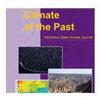拉普捷夫海西部自上一次冰期以来陆地有机物快速迁移的环境控制因素
IF 3.2
2区 地球科学
Q1 GEOSCIENCES, MULTIDISCIPLINARY
引用次数: 0
摘要
摘要北极永久冻土储存了大量陆地有机物(terrOM)。在气候变暖的条件下,北极永久冻土会解冻,释放出陈年碳,并可能对现代碳循环产生影响。我们研究了海洋沉积物岩心中陆地生物标志物的特征,包括正构烷烃、脂肪酸和木质素酚类,以了解迁移到海洋中的陆地有机物的来源是如何随着海平面上升、海冰覆盖、内陆气候变暖和淡水输入等不同环境条件的变化而变化的。我们研究了拉普捷夫海西部的两个沉积物记录(PS51/154 和 PS51/159),涵盖了过去 17.8 千年的时间。我们的分析揭示了三个陆地生物标志物高积累率(MARs)时期,分别为 14.1 至 13.2、11.6 至 10.9 和 10.9 至 9.5 千年前。这些MAR峰值揭示了不同的terrOM来源,很可能是对陆架地形变化、海平面上升率和内陆变暖的响应。通过将拉普捷夫海的地表OM高MAR期与其它北极边缘海的已发表记录进行比较,我们认为,融水脉冲1A(mwp-1A)期间海平面快速上升导致海岸侵蚀加剧,引发了整个北极地区的地表OM MAR升高。额外的地层OM MAR峰值与内陆变暖加剧、无冰期延长和淡水泛滥的时期相吻合,这些时期在不同地区有所不同。我们的研究结果突显了区域环境对地表OM来源的控制,除了全球控制之外,区域环境还可能促进或阻碍区域地表OM通量。本文章由计算机程序翻译,如有差异,请以英文原文为准。
Environmental controls of rapid terrestrial organic matter mobilization to the western Laptev Sea since the last deglaciation
Abstract. Arctic permafrost stores vast amounts of terrestrial organic matter (terrOM). Under warming climate conditions, Arctic permafrost thaws, releasing aged carbon and potentially impacting the modern carbon cycle. We investigated the characteristics of terrestrial biomarkers, including n-alkanes, fatty acids, and lignin phenols, in marine sediment cores to understand how the sources of terrOM transported to the ocean change in response to varying environmental conditions such as sea-level rise, sea ice coverage, inland climate warming, and freshwater input. We examined two sediment records from the western Laptev Sea (PS51/154 and PS51/159) covering the past 17.8 kyr. Our analyses reveal three periods with high mass accumulation rates (MARs) of terrestrial biomarkers, from 14.1 to 13.2, 11.6 to 10.9, and 10.9 to 9.5 kyr BP. These MAR peaks revealed distinct terrOM sources, likely in response to changes in shelf topography, rates of sea-level rise, and inland warming. By comparing periods of high terrOM MAR in the Laptev Sea with published records from other Arctic marginal seas, we suggest that enhanced coastal erosion driven by rapid sea-level rise during meltwater pulse 1A (mwp-1A) triggered elevated terrOM MAR across the Arctic. Additional terrOM MAR peaks coincided with periods of enhanced inland warming, prolonged ice-free conditions, and freshwater flooding, which varied between regions. Our results highlight regional environmental controls on terrOM sources, which can either facilitate or preclude regional terrOM fluxes in addition to global controls.
求助全文
通过发布文献求助,成功后即可免费获取论文全文。
去求助
来源期刊

Climate of The Past
地学-气象与大气科学
CiteScore
7.40
自引率
14.00%
发文量
120
审稿时长
4-8 weeks
期刊介绍:
Climate of the Past (CP) is a not-for-profit international scientific journal dedicated to the publication and discussion of research articles, short communications, and review papers on the climate history of the Earth. CP covers all temporal scales of climate change and variability, from geological time through to multidecadal studies of the last century. Studies focusing mainly on present and future climate are not within scope.
The main subject areas are the following:
reconstructions of past climate based on instrumental and historical data as well as proxy data from marine and terrestrial (including ice) archives;
development and validation of new proxies, improvements of the precision and accuracy of proxy data;
theoretical and empirical studies of processes in and feedback mechanisms between all climate system components in relation to past climate change on all space scales and timescales;
simulation of past climate and model-based interpretation of palaeoclimate data for a better understanding of present and future climate variability and climate change.
 求助内容:
求助内容: 应助结果提醒方式:
应助结果提醒方式:


